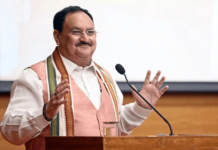The rich world has yet to provide a global response to the pandemic, a failure that’s hitting hard in India. The official Covid-19 death toll in India surpassed 200,000 as it hit another global record of more than 4 lakh new infections. The US President’s chief medical adviser said that helping India was a responsibility that the rich countries need to assume. There are responsibilities that wealthy countries have to each other, while dealing with countries that don’t have adequate resources or capabilities.
A new study has estimated that the COVID-19 pandemic has had a disproportionately deleterious impact on living standards in India in 2020, with the sharp economic contraction in pushing as many as 7.5 crore people into the ranks of the poor. In absolute terms, the number of poor in India is posited to have swelled to 13.4 crore, reversing the gains made in the preceding nine years when the country cut the number of poor by more than three-fourths to an estimated 7.8 crore in 2019. Similarly, the numbers of India’s middle class are projected to have shrunk by 3.2 crore to about 6.6 crore, compared with the number this income cohort would have reached absent the pandemic.
The assessment, which is based on an analysis of the World Bank’s database, does, however, acknowledge the multiple assumptions that inform the study. These include varying base years for income/consumption figures – with India’s from 2011. Still, the study serves as a stark reminder of the economic disparities. The latest report once again spotlights the widening inequality in India, exacerbated by the pandemic, as the lower income populations have disproportionately borne the brunt of job and income losses in the wake of the multiple lockdowns. The fiscal policy response to redress this massive increase in precarity has also been underwhelming, especially when viewed from the perspective of the pre-pandemic tax cuts that the government handed to corporates in an attempt to revive private investment and rekindle growth.
With the number of COVID-19 cases once again rising disconcertingly across the country, there is a clear and present danger that not only could any nascent economic recovery be stymied even before it gains traction but that the number of those sliding into poverty could jump dramatically. The policy responses to the rising wave of infections could well test the government’s ‘lives versus livelihoods’ playbook to the hilt.
Coming back to our state in general and the Twin City of Bhubaneswar-Cuttack in particular, no one wants that there should be any lockdown or shutdown – neither the Centre, nor the state and certainly not the public. But the way the Covid graph has skyrocketed over the last four weeks, the state government may be left with little option but to resort to a prolonged spell of lockdown, despite the fact that such steps are detrimental for the livelihood. Prime Minister Narendra Modi has appealed to states to resort to lockdown only as a last resort and focus on localised containment zones instead. On his part, Odisha Chief Minister Naveen Patnaik has repeatedly appealed to the people with folded hands to strictly follow the Covid protocol so as to prevent the return of lockdown. But neither the CM’s appeal nor the dire warnings of health experts appear to have had much of an impact on the people. Many people still don’t wear masks. And a majority of them have their masks not covering the nose as it should.
As the daily caseload goes through the roof, doctors keep advising people to stay put at home and not to venture out unless it is absolutely necessary. But watching the crowds on the streets and in the marketplaces, it doesn’t seem under control. ‘Social distancing’ appears to be an unheard-of concept.
There could be several reasons for this public apathy to ‘Covid appropriate behaviour’. It is possible after living with severe restrictions for the better part of last year, people have developed some kind of a ‘restriction fatigue’ and are now in no mood to go back into their cells again. Compulsions of earning a livelihood have also forced many people, still trying to recover from the loss of income for months together, to go out. The availability of the vaccine may also have played a role in the people developing a sense of complacency. Whatever the reason, there is little doubt that this complacency could cost us dear in terms of lives and stretch our rickety healthcare infrastructure even further. If this attitude persists, local lockdown may not be far away and in a much more stringent form than we have seen so far. A weeklong lockdown now looks a distinct possibility, at least in the twin cities of Bhubaneswar and Cuttack.
While we talk of stringent administrative measures to arrest the movement of people and also the pace of spread of the virus, we think that the action plan adopted by us last year may certainly not hold good this year; under the changed circumstances of the velocity of contamination and the spread. We had done it in past to control dreaded Malaria. While we failed to curb the spread of disease, we adopted a novel way to reduce the death caused due to the mosquito borne disease. Doctors treated the patients suffering from fever with quinine tablets. Only a few suffering from typhoid and other diseases could be identified out of the people unresponsive to quinine. By this, the disease could be nipped in bud. Today India is almost free from Malaria.
We find precious 4-5 days are killed till the Covid patients start taking medicines after they are tested positive. If all the people staying under one roof start taking medicines, only after any one of them suspects to be covid infected, hopefully all can be cured while in home isolation. Only the comorbid members may be tested and hospitalized.
Hope, all must respond to address the Pandemic at this juncture.









































